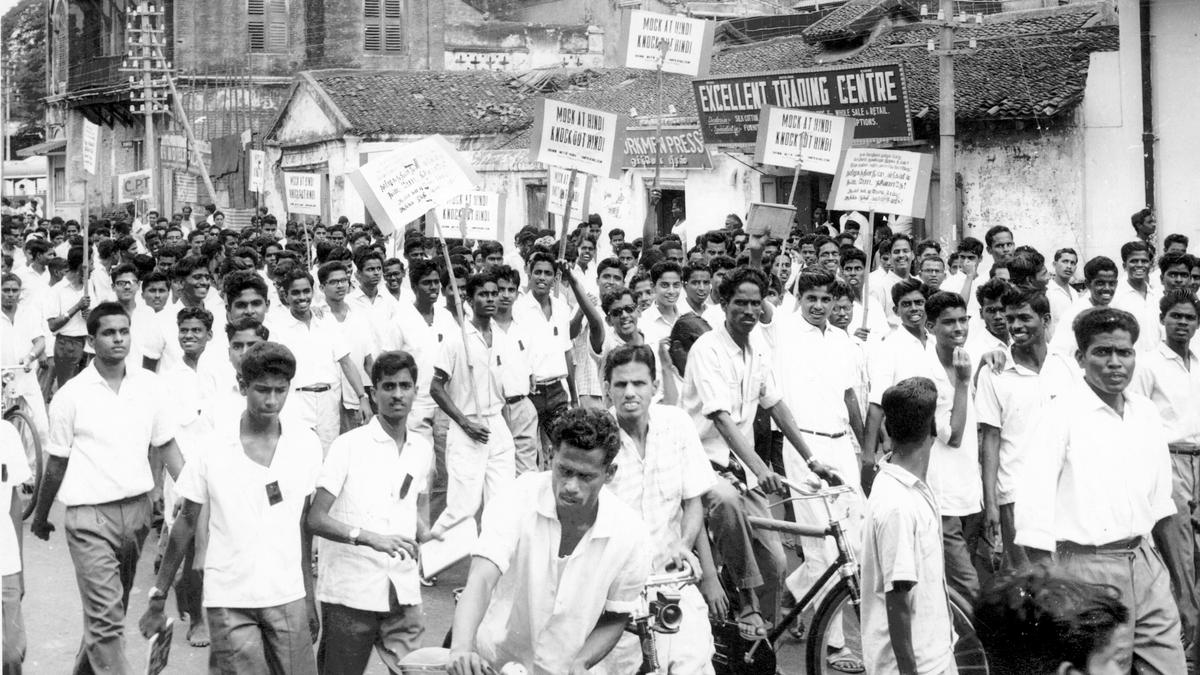
Anti-Hindi agitations in the 20th Century
The Hindu
Madras was a hub of anti-Hindi protests in the early 20th century, leading to significant linguistic changes in the state.
Apart from the struggle for Independence, early 20th Century Madras was the nerve centre for a very significant batch of protests in the State — the anti-Hindi agitations. Strangely enough, this protest, on linguistic grounds, continues to date.
Be it in 1938, when the Justice Party led a campaign against the move by the Congress government, under the leadership of C. Rajagopalachari (Rajaji), to introduce the teaching of “Hindustani” in 125 secondary schools of the then Madras Presidency, or in the mid-1960s when the anti-Hindi agitation took place on a larger scale, the city was the bedrock of the agitations.
According to The Rajaji Story (1937-1972), the second volume of the biography authored by Rajmohan Gandhi, the decision covered Classes VI to VIII, where students were required to learn the subject but failure in it could not block promotion to a higher class. For the Premier (the post equivalent to that of the present-day Chief Minister), the term ‘Hindustani’ was preferred to Hindi so that many Urdu words could become part of its vocabulary. Besides, the students could learn the language either in the script of Nagari [Sanskrit] or Urdu. Rajaji, who called the move “chutney on the leaf”, said “taste it or leave it alone.”
But, critics of the government’s decision had generally used the term, Hindi, throughout. ‘Periyar’ E.V. Ramasamy, who along with members of the Justice Party and Tamil enthusiasts, severely opposed the government’s decision and organised protests. Natarajan, a 20-year-old protester from the city, was among those arrested by the police on December 5, 1938. A few days later, he was admitted to a hospital, but died on January 15, 1939.
A month later, on February 13, Thalamuthu, a native of Kumbakonam, was arrested along with others for staging a demonstration at the Hindu Theological High School in George Town in Madras. He fell ill and died on March 11. The death of the two youngsters in police custody fuelled the protest further. Thalamuthu and Natarajan became the icons of the anti-Hindi agitation. Fifty years later, the then Chief Minister M. Karunanidhi, named the building in Egmore, which housed the Chennai Metropolitan Development Authority (CMDA), after them.
The death of the two young men did not make any impact on Rajaji, who continued with his policy on the language issue. On June 18, 1939, Periyar, while addressing a public meeting on the Triplicane beach, said: “It was the intention of the government to thrust Hindustani [Hindi] on us,” The Hindu reported the next day. The episode came to an end only after the Rajaji government resigned in 1939 and Governor Lord Erskine withdrew the Government Order a year later.
The issue resurfaced in a big way at the time of enactment of the Official Languages Act, 1963. The 15-year period for English to remain an associate language was also to come to an end by January 26, 1965.













